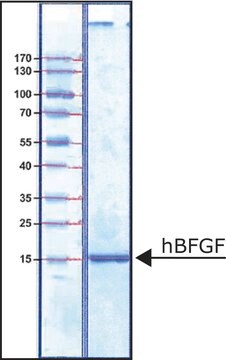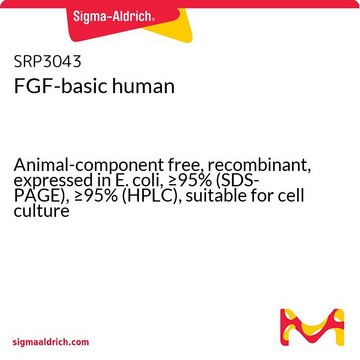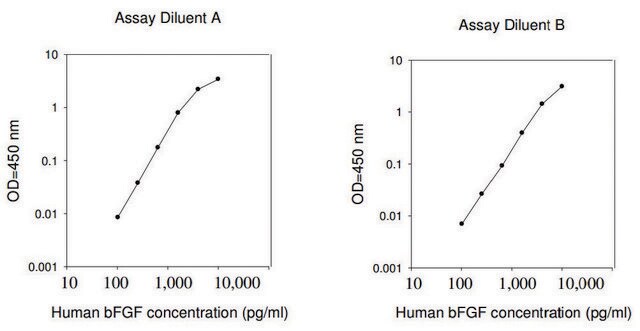F3685
Fibroblast Growth Factor-Basic, human
≥97% (SDS-PAGE), recombinant, expressed in E. coli, carrier free, suitable for cell culture
Sinónimos:
FGB-b, FGF-2, HBGF-2, HBGH-2, Prostatropin, bFGF
About This Item
Productos recomendados
product name
Fibroblast Growth Factor-Basic, FGF-Basic, from human, recombinant, expressed in E. coli, carrier free
biological source
human
Quality Level
recombinant
expressed in E. coli
assay
≥97% (SDS-PAGE)
form
lyophilized powder
potency
<1 ng/mL Biological Activity EC50
mol wt
16.0 kDa
packaging
pkg of 4X25 μg
pkg of 25 μg
storage condition
avoid repeated freeze/thaw cycles
color
white to faint yellow cast
solubility
water: soluble 0.025 mg, clear, colorless to faintly yellow
UniProt accession no.
storage temp.
−20°C
Gene Information
human ... FGF2(2247)
General description
Citation
2. Gospodarowicz, D. et al., Structural characterization and biological functions of fibroblast growth factor. Endo. Rev., 8, 95-114 (1987).
3. Esch, F. et al., Primary structure of bovine pituitary basic fibroblast growth factor (FGF) and comparison with the amino-terminal sequence of bovine brain acidic FGF. Proc. Natl. Acad. Sci. USA, 82, 6507-6511 (1985).
4. Neufeld, G., and Gospodarowicz, D., Basic and acidic fibroblast growth factors interact with the same cell surface receptors. J. Biol. Chem., 261, 5631-5637 (1986).
5. Lobb, R.R. et al., Purification of heparin-binding growth factors. Anal. Biochem., 154, 1-14 (1986).
6. Abraham, J.A., Human basic fibroblast growth factor: nucleotide sequence and genomic organization. EMBO J., 5, 2523- 2528 (1986).
Storage Class
10 - Combustible liquids
wgk_germany
WGK 1
flash_point_f
Not applicable
flash_point_c
Not applicable
Certificados de análisis (COA)
Busque Certificados de análisis (COA) introduciendo el número de lote del producto. Los números de lote se encuentran en la etiqueta del producto después de las palabras «Lot» o «Batch»
¿Ya tiene este producto?
Encuentre la documentación para los productos que ha comprado recientemente en la Biblioteca de documentos.
Los clientes también vieron
Nuestro equipo de científicos tiene experiencia en todas las áreas de investigación: Ciencias de la vida, Ciencia de los materiales, Síntesis química, Cromatografía, Analítica y muchas otras.
Póngase en contacto con el Servicio técnico








